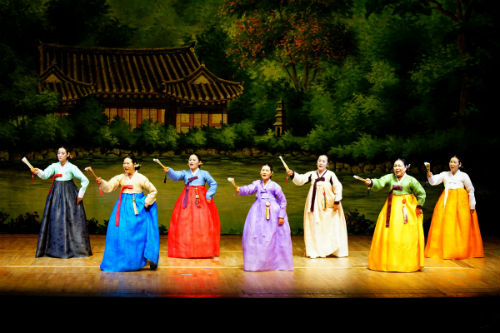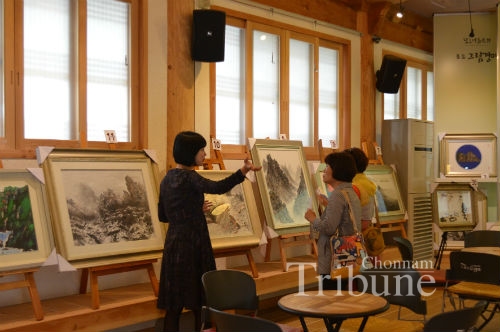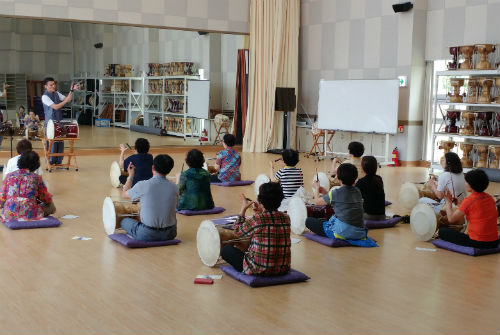남도예술의 고장, 진도

Jindo’s Hero and Arirang Melody
Situated near the Jindo bridge, the grand statue of General Yi Sun-shin reminds passers-by of one of Korea’s most respected national heroes. He was born in Seoul to a poor ruling class family in Joseon Dynasty. Despite his limited training background in naval battling, General Yi wrote a mega battle record in Korean history when he defeated the Japanese invaders who had 133 vessels with his troops who had a mere 12 ships at the south end of Jindo bridge in 1597. His genius military strategy and patriotism still continue to inspire multiple historic cinematic forms.

If it had not been for General Lee, “Jindo Arirang” would have not been invented. Proudly representing the distinctive melody of Jeollanam-do’s southwestern region, it is sung in “yukjabaegi” mode which is typical in the Jeolla Province circle of folk songs. It is composed in five typical musical notes Mi, Sol, La, Si, Do in which Mi, La, Si are the important tones of the song. While Mi varies greatly, La usually comes as the last tone. In other words, Jindo Arirang has the particular Southwestern traits that distinguish it from the others.
Unlimsanbang – Land of Harmony
The melody of Jindo Arirang fits perfectly with the tranquility of Unlimsanbang. Hugging the foot of Cheomchalsan Mountain the area is surrounded by beautiful scenery and uncrowded neighborhoods. Unlimsanbang was home to Sochi Hur Ryeon (1808-1893) – a gifted, celebrated artist known for his southern style of Korean traditional painting over the late of Joseon Dynasty. Entering the complex, one is met with the family lineage at the entrance and the aesthetic displays are placed in chronological order, starting from Sochi’s works. During his 20s, he was taught by Master Choyui at the temple of Daedun in Haenam County. Afterwards, he managed to study traditional calligraphy and drawing under Chusa Kim Jeong-hee, which shaped him into becoming the most respected artist of “Namjonghwa” – a particular drawing style.

In 1857, Sochi founded Unlimsanbang as an art academy, laying the groundwork for the next three successive generations to follow in his footsteps. The second generation of Sochi gave birth to Misan’s two sons who both became painters of great stature, evidence of which is exhibited next to the first generation’s masterpieces. Misan is considered as one of the six great modern Korean painters. Situated beside his works is that of Namnong Hur Gun (1908-1987) – the third generation which stood out from the modern Southern painting style with realistic landscape depiction and dry brush techniques. Visitors are offered an informative tour guide to help them fully capture the energy and meaning of the art of Unlimsanbang family. Finally, at the end of the tour is the fourth generation Imcheon Hur Mun (1941-present). His paintings are presented in distinctive colors but still based on the principles of Unlimsanbang’s Namjonghwa style. Having admired the exhibition, one of the visitors shared his thoughts: “I think it is amazing that there are more than five famous artists in one family and that Sochi has left a legacy of his heirs and masterpieces”. Unlimsanbang attracts the interest of visitors from different areas of Jeollanam-do and even from other provinces. Works of about 130 artists are exhibited at the Sochi Hall and Jindo History Museum.
Jindo’s Exclusiveness – Art Auction & Namdo Culture Program
Not only was it home to one of the most influential painters of Korean painting scene, Jindo Unlimsanbang is also proud of hosting Bank of Namdo Art operated by Jeollanamdo Culture and Art Foundation. Located at the front gate, the venue welcomes its comers with cozy lighting and friendly staff. “It is the first auction project ever, and the only one nationwide, to be supported by the local government”, stated Seo Sun-suk – representative of this project team. Aiming to encourage the artistic creativity of newly promising and outstanding artists, Bank of Namdo Art also seeks to preserve and encourage Jeonnam’s cultural innovation. Regarding obstacles that the project has come across, Ms. Seo commented that this concept was not yet widely known by the public and its location was not ideal for some art enthusiasts who lived far away. Visitors arriving at 2pm every Saturday for the auction look forward to observing great works of Korean Painting, Western Painting, Literary Painting, Calligraphy and Calligraphy-carving. Auction participation is accepted at on-site registration, prior reservation or deputy bid.

Unlimsanbang goers are sometimes also the participants of the sui generis Namdo Culture Weekend program offered by the Jindo National Gukak Center. It is designated for families to experience and learn traditional Namdo culture through various dynamic activities and lessons of music, culture and games along with a tour around Jindo and nearby historic sites. The program aims to widen the public understanding of the particular regional culture. The person in charge, Mr. Heo San informed us that the program is available from March to December and there is no age restriction for participants. “There are plenty of other programs offered to the public so I personally think it is be better to have a variety of cultural activities,” he commented. Namdo Culture Weekend program takes place on Friday and Saturday every week with the capacity of 40 people.
Jindo is filled with a cozy atmosphere despite the late autumn chill. While indulging in the essence of this reservoir of historical and cultural memories, one might feel the nostalgia which in turn will help in shaping the identity of the Korean people. To be able to perceive art and culture is a precious gift that Jindo is capable of offering. Wait no more, culture and art buffs, visit the exquisite history-rich land of Jindo while you can.
By Nguyen Huong, Student Editor

